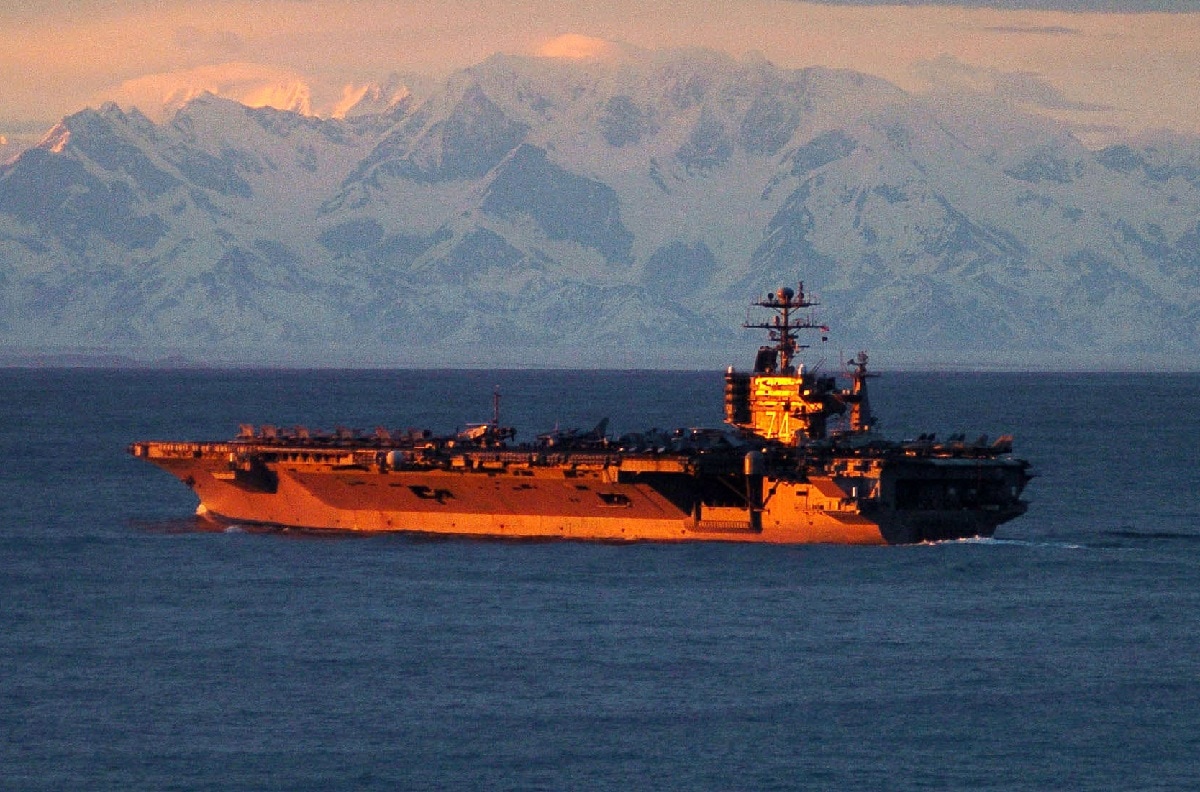Summary and Key Points: The U.S. Navy currently operates 11 aircraft carriers, but increasing threats from China, Iran, and regional instability argue strongly for expanding to 12.
-China’s growing carrier fleet and aggressive Pacific exercises demand stronger American deterrence and rapid response capabilities.
-The Middle East also requires continuous carrier presence to counter Iranian threats and Houthi missile attacks. Carrier strike groups have proven essential for defensive operations, intercepting drones and missiles effectively.
-With multiple simultaneous global threats, a twelfth carrier would enhance U.S. strategic flexibility, allowing rapid deployment of 5th-generation F-35C stealth jets, maintaining crucial global deterrence, and reinforcing national security posture across various contested regions.
America Needs 12 Aircraft Carriers
The United States Navy currently operates with 11 aircraft carriers. Yet, the geopolitical conditions and threat circumstances confronting the US suggest that 12 carriers may be a stronger and more effective Navy stance.
Given the current circumstances in the Pacific, Middle East, Mediterranean, and European theaters of operation, the reasons for this are clear and visible.
China Threat
Most are familiar with the Chinese threat and the pace at which the People’s Republic of China (PRC) is building and operating new aircraft carriers. Not long ago, the People’s Liberation Army Navy (PLAN) was able to operate as many as three carriers in the Pacific at one time.
Its first carrier, the Liaoning, and its second carrier, the Shandong, were both on patrol in the Pacific when the PLAN’s next carrier, the Fujian, was at sea doing sea trials.
The Chinese have also copied the US Navy’s “dual-carrier” warfare preparation exercises in the Pacific and have operated two carriers together on patrol near the South China Sea to conduct joint, integrated air attack preparation exercises.
China is now known to be building a massive 4th Supercarrier, which is anticipated to be the largest carrier ever built.
As a result, Combatant Commander demand for carriers in the Pacific is arguably at an all-time high, as forward presence would be critical in terms of deterrence and timing in the event of a conflict or surprise take-over of Taiwan.
The threat circumstance in the Middle East is also quite well-known, given threats presented by Iran and, of course, persistent attacks from the Houthis. Carrier strike groups are critical to deterrence, national image, and establishing a forward presence.
Yet, US Navy Carrier Air Wings demonstrated unique and tactically substantial value in counter-drone and maritime missile defense operations.
Red Sea Threat
Certainly, destroyers and cruisers operating in Carrier Strike Groups are well positioned with interceptors, threat detection radar, and various layered countermeasures such as lasers, electronic warfare (EW), and deck-mounted guns.
Yet, the US Navy’s Red Sea experience also showed that carrier-launched fighter jets could be essential to defensive counter-drone and counter-cruise missile operations.
Not only can fighter jets provide a sensor layer or aerial node beyond the standard radar field of view available to surface ships to detect targets, but they showed in the Red Sea that they could be in a position to take out, destroy, or intercept Houthi drones and cruise missiles with air-to-air missiles.
This experience further showed that aircraft carriers could bring additional defensive maritime warfare combat maneuvers. Iran is also a significant threat in the Middle East, and an ability to hold Iran at risk with the reality of a massive offensive air attack seems critical to deterrence efforts in the region.
Carriers are also needed in the Mediterranean, as several US carriers were deployed to protect Israel’s shores from further terrorist activity and prevent the Israel-Hamas war from escalating into a wider and much more dangerous conflict.
12 Carriers
These realities serve to underscore the many reasons why the US Navy would be well-served to operate as many as 12 carriers across the globe at one time, as it seems entirely realistic that the US Navy could need to project power and launch massive air campaigns in several different global regions at one time.
Also, given their ability to transport 5th-generation F-35C stealth fighter jets into position in any contingency, carriers can help “mass” air attack anywhere in the world. Currently, the US operates with a large-scale 5th-generation air attack advantage, and a single carrier can transport as many as 50 F-35Cs to high-risk, dangerous, forward areas.
Also, 12 carriers would allow the US Navy to surge its operational forward attack presence because more carriers would be available for deployment.
At any given time, aircraft carriers will also need to return to port for maintenance or sustainment, and other carriers are unavailable due to mid-life refueling complex overhaul or RCOH.
About the Author: Kris Osborn
Kris Osborn is Military Technology Editor of 19FortyFive and the President of Warrior Maven – Center for Military Modernization. Osborn previously served at the Pentagon as a highly qualified expert in the Office of the Assistant Secretary of the Army—Acquisition, Logistics & Technology. Osborn has also worked as an anchor and on-air military specialist at national TV networks. He has appeared as a guest military expert on Fox News, MSNBC, The Military Channel, and The History Channel. He also has a Masters Degree in Comparative Literature from Columbia University.

